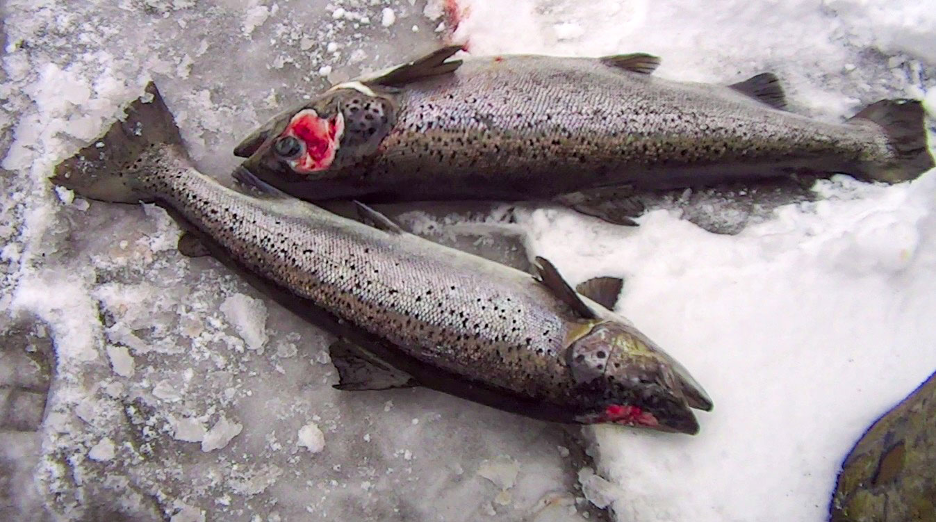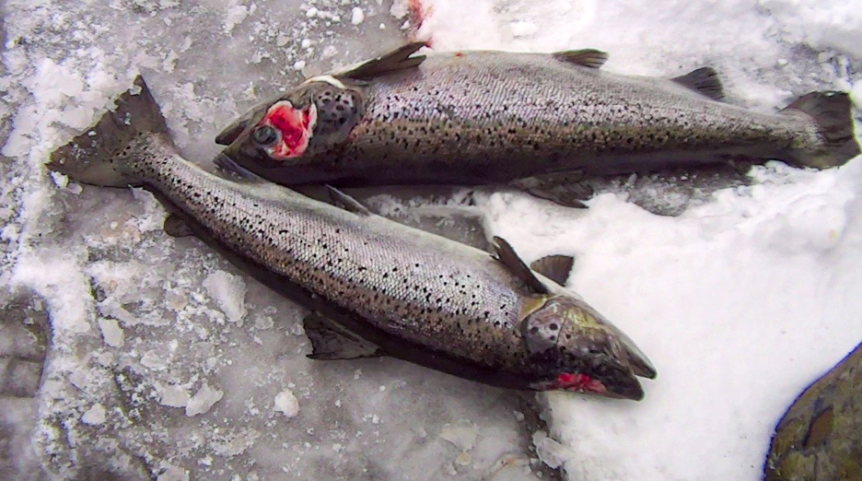- Like
- Digg
- Del
- Tumblr
- VKontakte
- Buffer
- Love This
- Odnoklassniki
- Meneame
- Blogger
- Amazon
- Yahoo Mail
- Gmail
- AOL
- Newsvine
- HackerNews
- Evernote
- MySpace
- Mail.ru
- Viadeo
- Line
- Comments
- Yummly
- SMS
- Viber
- Telegram
- Subscribe
- Skype
- Facebook Messenger
- Kakao
- LiveJournal
- Yammer
- Edgar
- Fintel
- Mix
- Instapaper
- Copy Link
Aquaculture is a rapidly growing form of food production, but that’s not a good thing for animals, the environment or consumers. Aquaculture involves the farming of aquatic animal and plant species. In 2016, global aquaculture raised roughly 110.2 million metric tons of fish for food. As a grim testament to the magnitude of animals slaughtered in industrial aquaculture, the United States Department of Agriculture measures aquatic animal deaths in tons instead of accounting for the actual number of individual aquatic animals killed in production. One estimate states roughly 47 billion finned fish and shellfish were killed for food in 2013 in the United States alone.
Aquaculture involves the breeding, rearing and slaughter of both freshwater and marine species. Aquaculture confines these animals in a range of environments, from water-based systems with cages and pens in the ocean, to open land-based systems using ponds, rivers, lakes and brackish water, to closed land-based systems where the aquatic animals are kept indoors.
No matter the type of environment, aquaculture is inherently inhumane. Aquatic animals have impressive cognitive abilities, making them aware of the deplorable plights their forced living environments thrusts upon them. Recent scientific developments reveal that many aquatic species have a range of cognitive abilities, including the capacity for pain, pleasure and joy. Aquatic animals have demonstrated intelligence and sentience by passing self-awareness and cognitive tests designed for human children. Some fish have passed the “mirror test,” where they recognize themselves in a reflection, demonstrating self-awareness. Others passed the “marshmallow test,” where they resisted an instant snack in exchange for a more desirable dinner, demonstrating understanding of delayed gratification. Aquatic animals also display intelligence in their abilities to multitask, use tools and solve problems.
Science has demonstrated that aquatic animals in captive environments require species-specific environmental enrichment (i.e., things to do) to adequately meet their welfare needs. But aquaculture facilities keep them in barren and crowded tanks that lack enrichment and adequate food. This clearly demonstrates that the facilities make no efforts to provide for the animals’ welfare needs, despite the scientific evidence showing that fish are aware of their suffering.
Animal Outlook’s undercover investigation of Cooke Aquaculture—the first-ever exposé of salmon aquaculture in the United States—revealed the horrific conditions Atlantic Salmon endured while being raised for human consumption at a hatchery in Maine. Hundreds of thousands of salmon were forced to live in barren, overcrowded tanks. These cramped and filthy conditions resulted in a host of ailments, including painful spinal deformities and fungal infections that ate away at their faces. In some cases, a lack of adequate food led to salmon cannibalizing the pupils of other salmon. Workers routinely slammed and stomped on the fish, ineffectively administered anesthesia during vaccinations and fin clippings, and threw them great distances, often practicing “trick shots.” In many cases, after a life of suffering, workers casually threw the salmon into buckets, where they slowly suffocated atop piles of dying fish.

The adverse impacts of global aquaculture extend beyond animal suffering to human health and the environment. Open net pens in natural waterbodies allow food, waste, antibiotics, bacterial diseases and parasites to flow from the fish, through the net and into the surrounding environment. Fish can and have escaped through these nets, introducing disease and invasive species into non-native environments. Predators prey on the captive fish, which can introduce disease into the natural food chain and cause a trophic cascade, a chain reaction that spreads through the food web. If a predator ate diseased fish, the predator could spread the disease, causing an ecosystem disruption. Fish in any aquaculture system can transmit parasitic and bacterial infections to facility workers, showing that aquaculture can lead to zoonotic disease. The COVID-19 pandemic demonstrates how zoonotic diseases can gravely impact humans, especially those who are immunocompromised.
Aquaculture encompasses more than fish species. It includes finned fish, crustaceans, mollusks and amphibians, and is expanding to include more species such as octopus. A Hawai’ian octopus farm is attempting to rear cultured generations of octopus in captivity. Farmed shrimp account for roughly 55 percent of global shrimp production. Frogs are farmed and traded for their legs.
The aquaculture industry touts itself as the solution for overfishing our oceans, but approximately 1.2 trillion ocean-fished aquatic animals—almost half of all fish caught at sea—are fed to fish in aquaculture. Other victims of the aquaculture industry include predators, because predators and seabirds are often killed or face inhumane and environmental harmful deterrents, such as pyrotechnic devices, piercing alarms and automatic explosives to keep them away from the farmed fish.
Aquaculture exploits our oceans, abuses aquatic animals and introduces disease to surrounding ecosystems, workers and potentially consumers. Informed and empowered consumers can lead to a more compassionate world. The best way to protect aquatic animals, the planet and yourself is to leave aquatic animals off of your plate and out of your shopping carts. You can also sign our petition.
By Danie Palermo, Animal Outlook Litigation Extern


Comments 1
Great article on aquaculture. Very informative and shows the negative impacts of aquaculture on the animals, the environment, and the entire system.